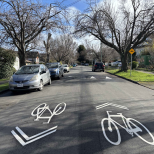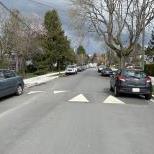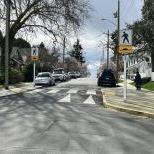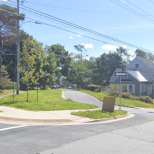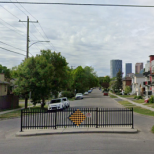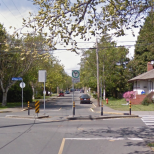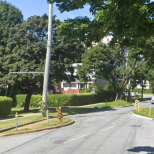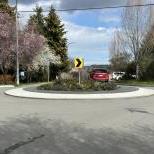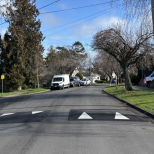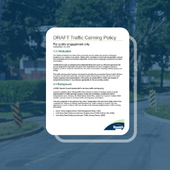Follow the project on HelloSaanich for updates!
Update:
On August 18, 2025, Saanich Council adopted the Traffic Calming Policy. The staff report, approved policy, staff presentation and other meeting materials can be found here (click on the meeting item title for drop down menu).
Thank you to everyone who participated in the public engagement process throughout April and May 2025.
The process included careful review of community priorities, meetings with advisory committees, information shared via the website, stakeholder workshops, a public survey, pop up public engagement, and adjustments to the policy to reflect what we heard. A What We Heard report detailing the feedback received can be found here.
While the policy has been approved, there is currently no dedicated funding for traffic calming projects. Future steps, including any project implementation, will depend on available resources. Updates will be shared here as information becomes available.
What is Traffic Calming?
Traffic calming uses a mix of street design, communications, and sometimes enforcement to encourage appropriate vehicle behaviour, for example by slowing vehicles and discouraging shortcuts through neighbourhoods. Common examples of traffic calming measures are speed humps, curb extensions, chicanes, and traffic circles (see images below).
Goals of Traffic Calming
- Improve livability in neighbourhoods
- Increase active transportation
- Improve safety and the perception of safety for people travelling by all modes
- Align driver behaviour with surrounding land uses
- Plan and implement fiscally prudent infrastructure
Why create a Traffic Calming Policy?
Saanich is a Vision Zero community. We are working to eliminate traffic deaths and serious injuries on our roads. Traffic calming is a key part of this. Council directed staff to develop this new policy to take a consistent, transparent approach to making neighbourhood streets safer and more livable. The policy supports both the Road Safety Action Plan and the Active Transportation Plan.

How does the policy work?
The Traffic Calming Policy sets out a clear process for selecting, prioritizing, and building projects of two types:
1. Types of projects
- Residential Roads and Neighbourhood Bikeways: Traffic calming on local streets inside the Urban Containment Boundary or on roads to be designed as neighbourhood bikeways.
- Special Project Areas: Larger or more complex projects e.g., calming measures across several streets or on collector/major roads.
Click here for illustrations of the types of projects.
2. How projects are identified
Staff identify potential locations for traffic calming in several ways:
- Public requests or concerns from residents
- Data collection and safety reviews
- Coordination with other projects or plans
3. Screening and prioritization
For residential streets and streets to be designed as a Neighbourhood Bikeway, we screen suggestions to decide if traffic calming is needed (e.g. high speeds, lots of traffic, history of serious crashes). Projects that meet the thresholds go on a master list. Projects in Special Project Areas are added directly to the list for consideration.
Projects are then prioritized based on factors like safety, proximity to schools and parks, lack of sidewalks or bike lanes, and crash data.



